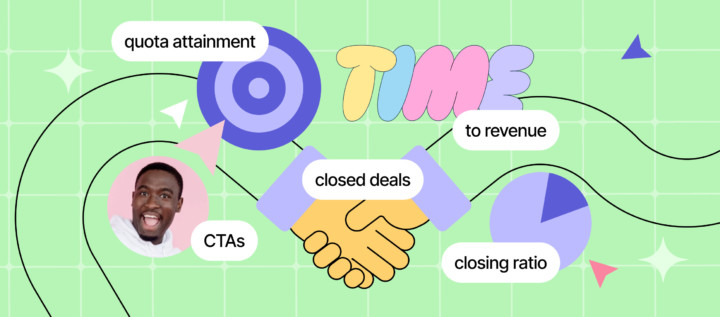7 sales enablement best practices to empower your team
Discover the secrets of rapid sales metrics growth from Dashly team experts. What strategies and tools to use, which pitfalls to avoid, what examples and best practices to follow.
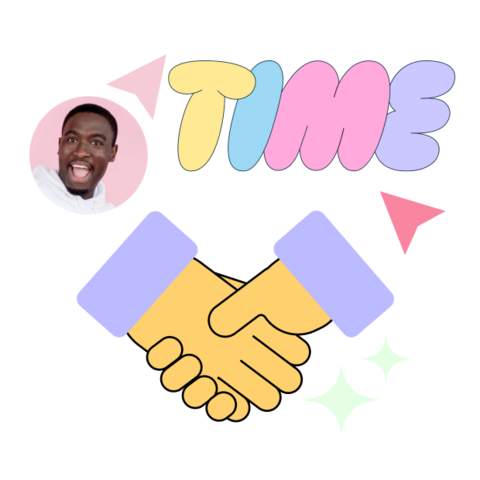
Part 1: What is sales enablement? Definite guide + Strategy + Tools
Part 2: How to measure sales enablement: 20 metrics to track in 2024
Part 3: AI in sales enablement: 5 strategies to transform your sales process
Part 4: 10 steps to building a sales enablement strategy in 2024
Part 5: How to Create an Automated Sales Funnel: examples & tools
Part 6: 7 sales enablement best practices to empower your team
Part 7: Top 13 sales automation tools to propel your sales strategy
Part 8: 10 Sales Enablement Tools: Best Software To Grow Your Team Performance
Part 9: How to structure your sales enablement team: 10 roles and responsibilities
Part 10: Mastering sales automation: A comprehensive guide to best practices and tools
Sales enablement is the strategic approach to equipping sales teams with the right tools, content, and skills to sell effectively at scale. It’s not just about boosting revenue; it’s the backbone of sustainable business growth.
But how do you ensure your strategy is on point?
Dive into our sales enablement best practice guide, where we unveil 7 proven best practice sales enablement tactics that promise to empower your team.
Get ready to unlock the full potential of your sales force with these insightful best practices!
Identify the best practices that already work
Before diving into new strategies, identifying what’s already succeeding within your team is pivotal. The best practices for sales enablement aren’t always about reinvention; they’re often about recognizing and building on the effective methods in place. Here’s how to pinpoint these winning tactics.
To lay the groundwork for sales enablement best practices, a thorough analysis of what already works within your team is a crucial step:
- Analyze sales rep performance: Deep dive into your CRM and sales data to identify the top performers in your team. Look beyond the numbers to understand the behaviors and tactics that are driving their success. Are they exceptional at nurturing leads, or do they have a knack for cross-selling? Understanding their methods can offer valuable insights into crafting a winning sales formula.
- Discover effective techniques: Once you’ve identified your top sales reps, dissect the specifics of their success. Do they use a particular set of tools more effectively? Are their communication tactics more persuasive or perhaps more empathetic? Also, assess their time management skills and how they prioritize tasks, as these can often be the differentiators between good and great sales performance.
- Gather insights: Direct feedback is invaluable. Engage with your high achievers through interviews or surveys, asking them to self-reflect on what they believe contributes to their high performance. It could be adherence to a strict daily routine, a specific way they use sales enablement tools, or unique strategies they’ve developed to overcome common objections.
- Scale successful methods: With these insights in hand, create a blueprint for success that can be adopted by the rest of the sales team. This might involve formalizing certain techniques into training sessions, creating templates based on successful sales pitches, or adjusting sales processes to mirror those of top performers. By standardizing these effective approaches, you can raise the performance level across the entire team, driving better results and fostering a culture of continuous improvement.
Understanding and implementing existing sales enablement best practices sets a solid foundation for refining your sales strategy and achieving collective success.
Automate repetitive tasks for sales enablement
Automating repetitive tasks is a cornerstone of sales enablement tactics that can liberate your team to tackle more complex challenges. By embracing the best sales practices, you can ensure that your sales force spends less time on monotonous tasks and more on what truly matters.
Lead qualification and scoring
This job can be easily automated by a chatbot.
Let’s take Dashly’s AI-powered chatbot for example.
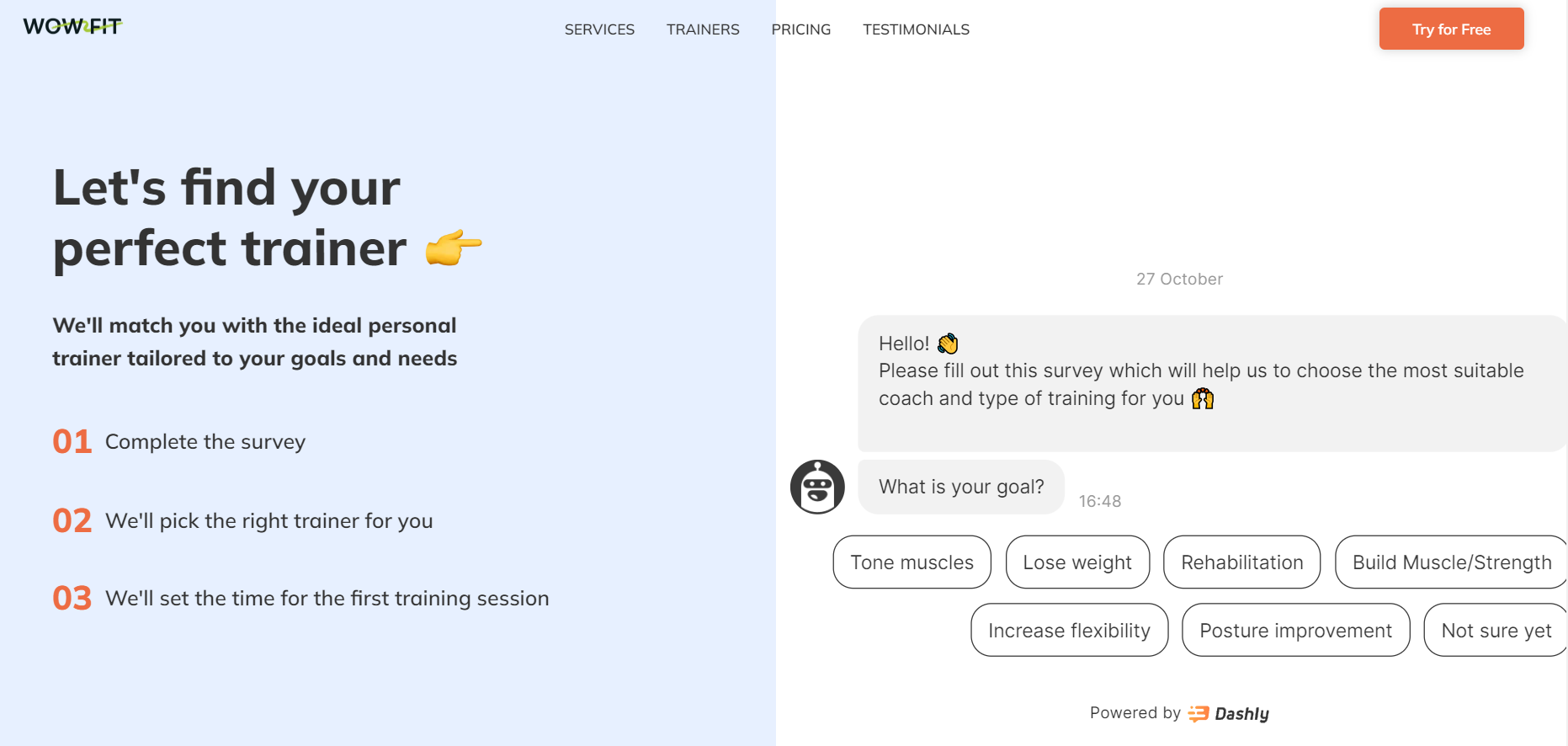
You can set it up to:
- Engage leads automatically in conversation as soon as they visit your site;
- Qualify leads by asking pre-set questions to understand their needs better;
- Segment leads based on their responses, determining their readiness to buy and guiding them through the sales funnel.
Testing out this chatbot could significantly streamline your sales process, giving your team the freedom to focus on nurturing relationships and closing deals.
2x your sales by contacting the most promising leads first with Dashly AI chatbot
Sign up to check how it works
Triggered communication
Implementing triggered messages, such as emails, can:
- Initiate the first contact without manual effort;
- Provide timely follow-ups based on customer behavior or milestones, ensuring no lead is forgotten.
By adopting these sales enablement tips and integrating such automation into your workflow, you can save invaluable time. Let your team step away from the grind of repetitive tasks and invest in honing their skills for more nuanced aspects of the sales process. Try these sales best practices today and watch your team’s efficiency soar 🚀
Align sales and marketing
For the most effective lead management and conversion, marketing and sales need to be in perfect harmony. When these two powerhouses collaborate, the path to closing deals becomes smoother and more streamlined 🤝
Here’s how you can align the stars — or in this case, sales and marketing.
Set objectives
- Establish clear, mutual goals regarding the number of leads and deals to pursue;
- Define what makes a Marketing Qualified Lead (MQL) and a Sales Qualified Lead (SQL);
- Discuss and agree on strategies to hit these benchmarks, ensuring both teams are working towards the same vision.
Manage leads
- Clarify roles and responsibilities for each stage of the lead’s journey, from attraction to conversion;
- Arrange seamless lead transfers, ensuring no valuable context is lost in the handoff between teams.
Coordinate efforts
- Marketing must keep sales in the loop about new campaigns and experiments, informing them of expected leads and the context for each offer;
- Sales should consistently provide feedback on lead quality and progress, enabling marketing to gauge if they’re on target or if a campaign pivot is necessary.
By following these best practices in sales and employing these sales enablement activities, both teams can work more effectively toward their common goal: growth. Consider these sales enablement tips and tactics as a blueprint for collaboration, and let the synergy between sales and marketing drive your business forward 🚀
Read also:
Give access to all the necessary content for effective sales enablement
Providing sales teams with ample resources is a cornerstone of effective sales enablement, ensuring that they can craft offers that resonate deeply and personally with prospects.
Playbooks and ready-made campaigns
- Craft detailed playbooks that map out the ease of integrating your solution into a customer’s workflow;
- Analyze your audience thoroughly to segment it effectively;
- Create tailored playbooks and campaign templates for each segment, enabling sales to personalize their outreach and demonstrate the solution’s value from the get-go.
Success stories and use cases
- Compile impactful success stories and use cases showcasing how peers in their industry have benefited from your solution;
- Allocate time and resources to document these success stories comprehensively: they’re tangible evidence of your product’s impact;
- Make it a priority to fulfill sales’ requests for new content, because these materials are invaluable in validating your product’s success and closing deals.
Embracing these enablement best practices cultivates an environment of effective sales enablement. By equipping your team with the right content, you pave the way for more meaningful conversations and successful outcomes.
Remember, the best practices for sales enablement are about empowerment through resources — give your team the tools to thrive!
Here are some of Dashly’s customer success stories for your inspo 😉
Leverage the right tools for sales enablement
Speaking of tools…
Leveraging the right instruments is a best practice that can take sales enablement to the next level. Here’s how three distinct solutions can cater to various needs within your sales strategy:
Dashly for sales

- Best practice examples: Automating lead capture and engagement with AI-powered chatbots; personalized lead nurturing.
- Ideal for businesses: SaaS, eLearning, FinTech, HR tech, Wellness with a sales team of more than 3 reps that want to optimize their work.
- How it helps sales teams: Dashly streamlines the process of engaging and qualifying leads, making sure that sales teams spend their time on the most promising prospects.
- Pricing: Offers a custom pricing model, depending on the business type and which tasks they want to solve.
Aircover.ai for sales
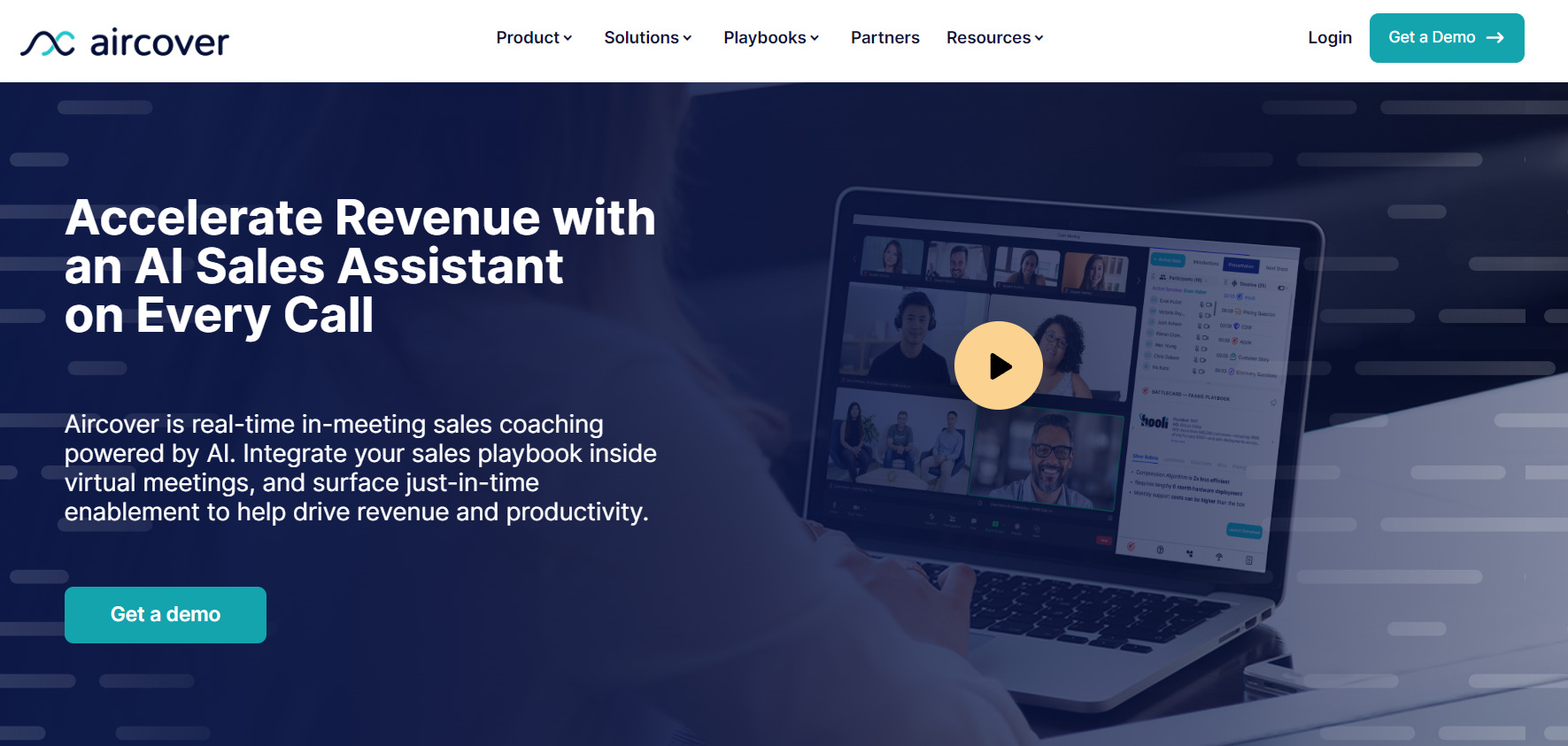
- Best practice: Real-time conversational guidance and objection handling for sales calls; sales call analytics.
- Ideal for businesses: B2B organizations, especially those with complex sales cycles that can benefit from on-the-spot intelligence.
- How it helps sales teams: Provides reps with immediate insights and information during customer interactions, helping to improve outcomes.
- Pricing: Pricing may vary based on the size of the team and the scope of features required. Interested businesses should contact Aircover.ai for a custom quote.
Gong for sales
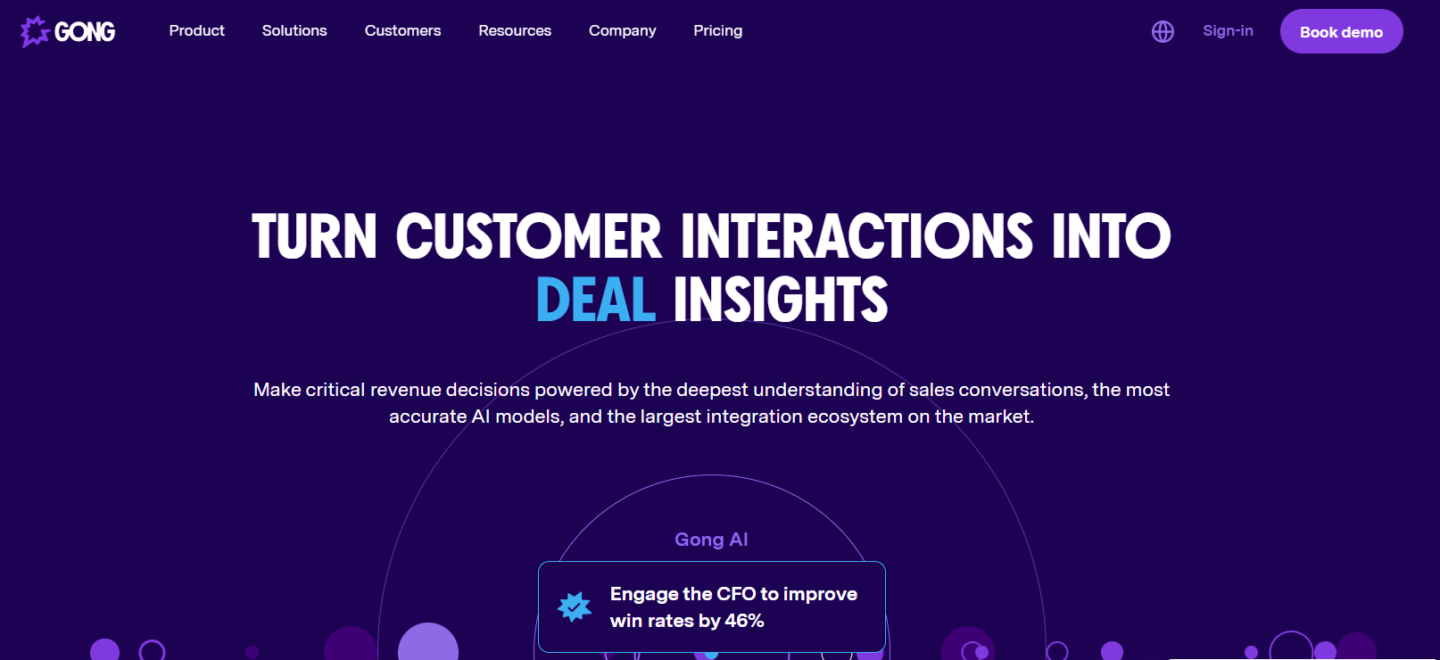
- Best practice: Conversation intelligence to analyze sales calls and emails; team performance insights.
- Ideal for businesses: Medium to large sales teams across various industries that want better visibility into customer interactions and sales effectiveness.
- How it helps sales teams: Offers actionable feedback for sales reps, allowing them to fine-tune their approach based on what’s proven to work.
- Pricing: Gong usually provides customized pricing plans to match the specific needs of an organization, with the possibility of different service levels.
Adopting tools that align with these best practices for sales can significantly enhance your team’s productivity and effectiveness. They offer different angles of approach — whether it’s initial engagement, in-call support, or post-call analysis — each contributing to the robustness of sales enablement best practices within your company.
Read also:
Educate and train to master the sales enablement best practices
To implement effective sales enablement and ensure that your team is fully equipped to meet the demands of today’s sales landscape, continuous education and training are paramount. Here are vital tips to ensure your sales reps are well-prepared:
- Ongoing learning: Encourage a culture of continuous improvement where sales reps are motivated to learn and update their skills regularly.
- External expertise: Bring in sales experts or external trainers to provide fresh perspectives on best sales enablement practices.
- Role-playing exercises: Use role-play scenarios to help sales reps practice their pitches and responses to various customer objections, increasing their confidence.
- Feedback loops: Establish a system for regular feedback, allowing for constructive critiques and acknowledging successes.
- Sales enablement technology training: Ensure that your team is proficient in the tools and technologies that support sales enablement efforts.
- Sales and product knowledge: Regularly update your team with product changes, market developments, and competitor insights.
- Sharing best practices: Create a forum where sales reps can share their experiences and best practices for sales enablement with each other.
Training isn’t just about understanding the product or service. It’s also about mastering the sales process and leveraging the best practices in sales enablement to build and maintain relationships, negotiate effectively, and close deals.
Investing in your team’s development is essential to sales success.
Measure and optimize your sales enablement process
To truly embrace sales enablement best practices, you need to measure and fine-tune your processes continuously. Here’s how you can assess and optimize your sales enablement efforts:
Key metrics to evaluate
Qualitative:
- Demo Proficiency: Evaluate the ability of sales reps to execute a demo effectively, assessing their product knowledge and presentation skills.
- Level of Confidence: Gauge how confident the sales team feels in their role; a confident team is typically more effective.
Quantitative:
- Sales Cycle Length: Track the average time taken to close a deal. Shorter cycles often indicate a more efficient sales process.
- Win/Loss Rate: Monitor the ratio of deals won to those lost to identify trends and pinpoint areas for improvement.
- Sales Closing Ratio: Measure the number of deals closed against the number of proposals given to understand conversion success.
Strategies for optimization:
- Review sales data regularly: Use the data gathered to identify patterns and bottlenecks in your sales process.
- Solicit sales team feedback: Encourage the sales team to provide insights on what’s working and what isn’t.
- Continuous training: Implement regular training sessions to address any gaps identified through metrics analysis.
- Iterate sales content: Update and refine sales materials based on the feedback and performance data.
- Leverage sales enablement tools: Utilize technology to streamline and automate parts of the sales process where feasible.
- A/B testing: Experiment with different sales enablement tactics to see what yields better results and incorporate successful methods into your strategy.
By following this sales enablement best practice guide, you’ll not only be able to measure the success of your sales enablement initiatives, but you’ll also gain valuable insights on how to improve.
Remember, the best practice sales enablement is about a cycle of constant refinement — what gets measured gets managed and optimized. Use these sales enablement tips and tactics to create a cycle of improvement that drives sales success.
Save your SDR time with Dashly AI
Qualify and score leads on autopilot to contact the most perspective ones
FAQ on enablement best practices
One key sales enablement best practice is to ensure that your sales team has access to comprehensive and up-to-date sales playbooks. This equips them with the necessary information and strategies to effectively engage with prospects and customers.
The four pillars of enablement, integral to the best sales practices, include 1) Training and Development, 2) Sales and Marketing Alignment, 3) Content Management, and 4) Analytics and Technology. Each pillar supports a strategic framework for empowering sales teams.
The three pillars of sales enablement, reflective of sales best practices, consist of 1) Content, ensuring that sales teams have relevant materials, 2) Training, equipping teams with the skills required for success, and 3) Coaching, providing ongoing guidance and feedback for continuous improvement.
Sales enablement strategies encompass a range of sales enablement ideas and activities designed to provide the sales team with the resources, tools, and knowledge needed to effectively sell a product or service. This may include sales training, the creation of sales content, and the implementation of sales tools and analytics.
Sales enablement directly impacts customer experience by ensuring that sales reps have the knowledge, content, and skills to engage customers effectively. This leads to more meaningful interactions, more tailored solutions, and ultimately a more satisfied customer.
Absolutely. Effective sales enablement can significantly shorten the sales cycle by equipping sales reps with the right tools and information to move deals forward more efficiently, reducing the time from initial contact to closing the deal.
Read also:
- What is sales enablement? Definite guide + Strategy + Tools for 2024
- How to measure success: 20+ sales enablement metrics to track in 2024
- Harnessing the power of AI sales enablement: 5 strategies to transform your sales process
- 10 steps to building a sales enablement strategy in 2024
- 7-steps guide on how to create an automated sales funnel in 2024: examples & tools
- Top 13 sales automation tools to propel your sales strategy
- 10 sales enablement tools: Best software to grow your team performance
- Guide on sales enablement team structure: 10 roles and responsibilities
- Mastering sales automation: A comprehensive guide to best practices and tools
- Sales and marketing automation: How to align their workflow to 2x revenue [Dashly example]
![Sales and Marketing Automation: How to align their workflow to 2x revenue [Dashly example]](https://www.dashly.io/blog/wp-content/uploads/2021/06/IMG_1074-1100x471-1-720x308.jpg)

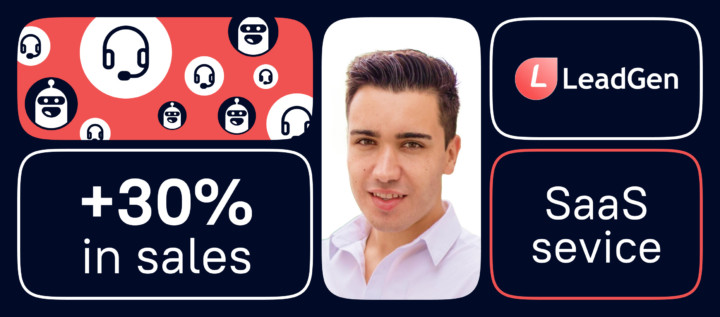

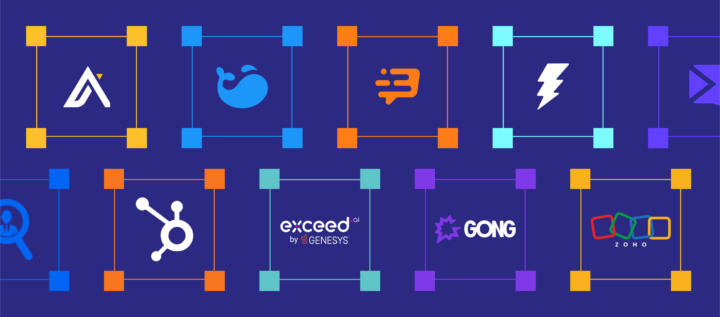



![What is sales enablement? Definite guide + Strategy + Tools for 2024 [CSO edition]](https://www.dashly.io/blog/wp-content/uploads/2021/03/sales-enablement-720x308.jpg)
